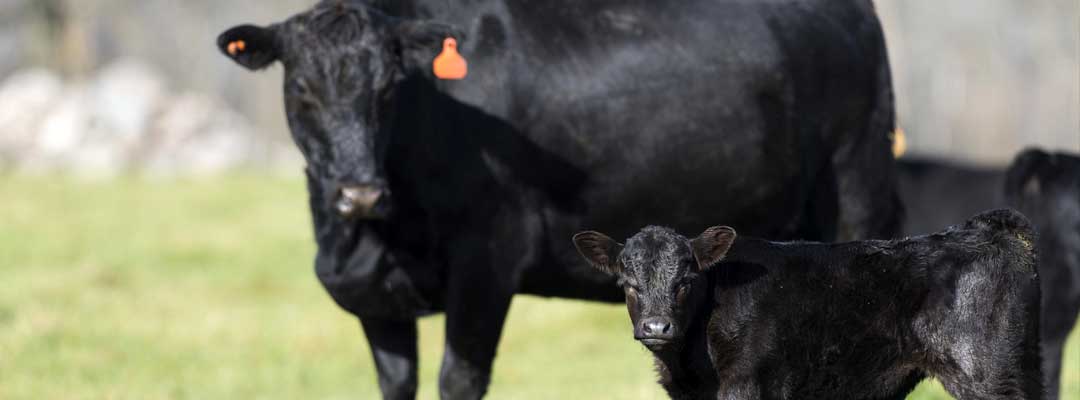FAQ Estrus Synchronization in Cattle
Leverage these methods of estrus synchronization in cattle, including Eazi-Breed CIDR, Lutalyse and Factrel.

Turn a source of economic loss into an opportunity for your operation. A South Dakota State University (SDSU) Extension report states, “Reproductive failure is a major source of economic loss in the beef industry. The majority of this loss occurs because cows do not become pregnant during a defined breeding season. You can give cows an additional chance to become pregnant during a defined breeding season by using estrus synchronization.”
What is Estrus Synchronization in Cattle?
SDSU summarized the effective management tool, stating how synchronizing estrus in cattle manipulates the estrous cycle of cattle, therefore allowing them to go into estrus around the same time.
What are Advantages of Estrus Synchronization?
Timed AI affords producers with more added gain from their calf crop â?? as breeding seasons tighten, and the first calves born are the heaviest at sale time â?? better uniformity of herd health protocols, such as when vaccinating and implanting calves, and reduced labor costs.
Reproductive efficiency is a producer’s key to profitability, shares Mark Alley, DVM, Zoetis Technical Service veterinarian. Simply? Calving early on in the season pays.
“Let's say that if we were able to push a cow to calve 30 days earlier, that's somewhere between 60 and 70 lbs. additional weight that we would be able to have at weaning. That's the number that we need to think about â?? if we extend our calving season to a 90-day calving season â?? that calf that's born at the end with the same genetic profiles may be 180 lbs. different between a calf that was born on Day 1 of the calving season,” says Dr. Alley. “Anything that we can do to push that forward, we're going to have more pounds of calf to sell.”
Dr. Alley urged others to read this University of Florida study, which demonstrated significant value for producers by reducing the breeding season from 120 to 70 days. The study reports, “The net result is a more compact calving season that has increased the value of calves (in current dollars) by $169 per calf or an annual increase in calf value for the 300 head operation of $50,700 per year.”
Regarding How to Synchronize Cattle for Breeding, What Are Options?
“There are many options on the market today, like Lutalyse, CIDR for cattle, and Kamar patches to name just a few. They all do different things,” Tony Hawkins, DVM, Valley Vet Supply Technical Service veterinarian said. “When producers are making protocols for their operation, they may use them all, or maybe just use a few. They can always call our Technical Service veterinary team at Valley Vet Supply to help talk through the options; we can ask questions and help guide them toward options that make the most sense for their operation. Producers also can speak with their herd health veterinarian.”
Dr. Alley echoed the many options available to producers, saying, “When we start thinking about synchronization, we have a tremendous number of options that are available to us. There's some combination of a Lutalyse and a progesterone that are typically incorporated into those â?? like the Eazi-Breed CIDR. You can make it just as complex as you want, or you can make it very, very simple. Just a dose of Lutalyse can be enough to tighten that calving season.”
With several effective options, cattlemen can look to these best sellers available at ValleyVet.com: Â
- Eazi-Breed CIDR Cattle Inserts, for use in beef or dairy herds, help to improve the effectiveness of reproduction programs through estrus synchronization. Groups of cows or heifers come into heat and can be bred within a shorter time period than natural estrus. Removal of the Eazi-Breed CIDR Cattle Inserts on Day 7 of treatment results in a rapid fall in plasma progesterone levels, which results in the occurrence of estrus in those animals responding to treatment. By using Eazi-Breed CIDR, producers help increase the number of cows that calve during the first 21 days and improve weaning weights, as well as help to improve accuracy of calving dates.
- Lutalyse for cattle is the most-used prostaglandin in the market, according to Zoetis. Artificial insemination synchronization programs with Lutalyse can improve breeding success. Indicated as a luteolytic agent, Lutalyse is effective only in those cattle having a corpus luteum (those that ovulated at least five days before treatment). A synchronized breeding program with Lutalyse and Factrel can improve pregnancy rates, reduce time necessary for heat detection and reduce cull rates.
Learn more and find solutions for your operation at ValleyVet.com.


